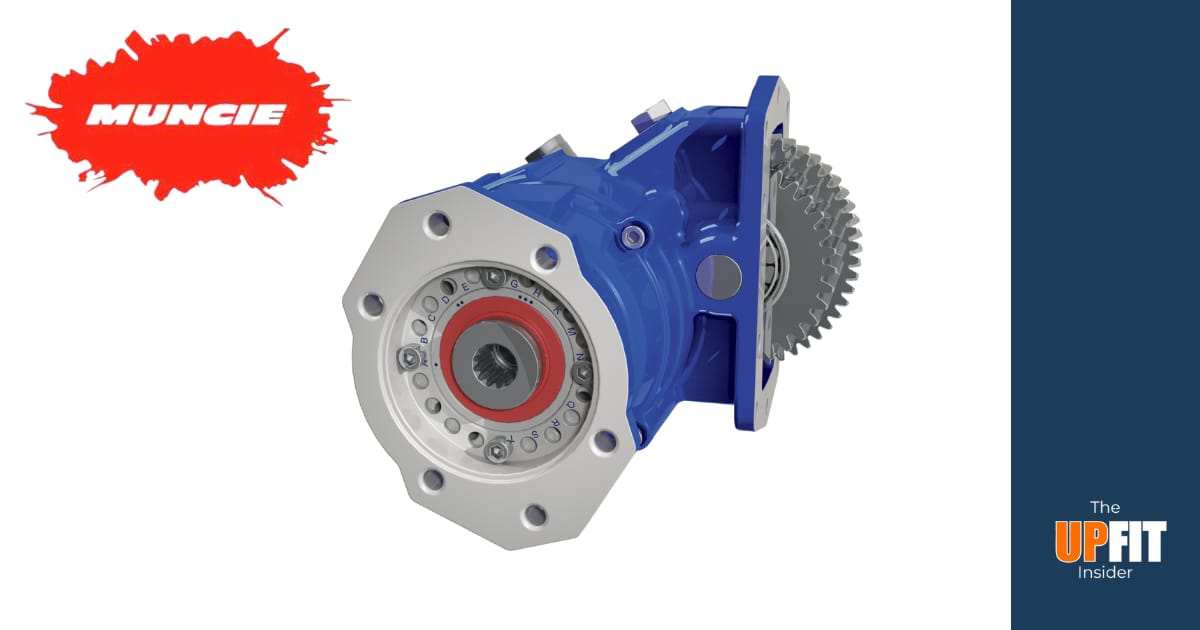- The Upfit Insider
- Posts
- 7 Essential Tips for Choosing the Right PTO Hydraulic Pump
7 Essential Tips for Choosing the Right PTO Hydraulic Pump
How one $3,200 “shortcut” turned into an $86,400 repair bill—and what every fleet manager should check before spec’ing their next truck.

How to Choose the Right PTO Hydraulic Pump
The town thought they were being smart—buying direct from the dealer.
Saved $3,200 up front. Got trucks faster. Everyone clapped.
Then winter hit. The plow bodies wouldn’t lift.
Why? Two rear-mount PTO ports instead of the side-mount configuration their plows required.
Two trucks down. One operator on overtime.
Average downtime cost: $600 per day.
Four months later: $86,400 gone.
That’s what happens when a fleet skips the right PTO hydraulic pump setup—a small spec error that snowballs into a massive loss.
(If this sounds familiar, read Why Work Trucks Fail & How to Prevent It —it breaks down the hidden costs of bad specs.)
What a PTO Hydraulic Pump Actually Does
A PTO hydraulic pump transfers torque from the transmission to drive hydraulics—plows, dumps, cranes, vac trucks, even aerial lifts.
When the pump’s torque rating, flow capacity, or port orientation don’t match the upfit, you lose performance and uptime.
It’s the heart of every hydraulic system. Under-spec it, and you’ll see cavitation, burned seals, and operators waiting on equipment that “should’ve worked.”

Tip 1: Understand Your Equipment’s Needs
Every hydraulic system revolves around flow, pressure, and torque.
If your spreader needs 15 GPM at 2,500 PSI and your pump delivers 11, that’s lost production.
If your PTO outputs 180 lb-ft and your pump needs 225 lb-ft, expect a clutch failure before winter ends.
Baseline Specs:
Flow: 10–20 GPM
Pressure: 2,000–3,000 PSI
Torque: 150–250 lb-ft (verify chart)
Duty Cycle: Continuous = utility / Intermittent = dump or plow
Spec 10–15 % above your peak flow and torque to stay in the safe zone—especially for cold-weather starts when oil thickens.
Tip 2: Know the Types of PTO Hydraulic Pumps
Two primary setups: PTO-driven and shaft-driven remote.
Type | Best For | Advantage | Caution |
|---|---|---|---|
PTO-driven | Dumps, plows, cranes | Compact, efficient | Demands precise alignment |
Shaft-driven | Vac trucks, blowers | Easier to service | Higher cost, more parts |
Side-mount PTOs handle lighter torque and shorter shafts; rear-mounts handle more torque but need cooling and longer hoses.
Torque misalignment between the PTO gear and the pump spline is a silent killer—always check both manufacturer charts.
Tip 3: Rear vs Side Mount PTO—Pick Correctly
A rear-mount PTO works best for continuous-duty systems like sewer vacs or blowers.
A side-mount PTO is ideal for plows, dumps, and cranes where clearance, accessibility, and hose routing matter.
Choosing the wrong layout is like buying the right tool for the wrong hand—it works, just poorly.
Pro Tip: Verify your transmission’s PTO provision code—Allison P088, Ford 62R5, etc.
These codes define torque, rotation, and port orientation.
Don’t assume your dealer knows; double check everything.
For real-world spec slip-ups, check 7 Spec Mistakes That Cost Fleets Thousands (And How to Avoid Them)
Tip 4: Plan the PTO Pump Installation Early
The best installs start before the truck ships.
Confirm Early:
Transmission model and PTO code
Pump torque vs output torque
Hose and cooler clearance
Valve, tank, and control locations
PTO Installation Checklist
Verify rotation (CW/CCW)
Match flow & torque
Pressure-test under load
Add cooler for 50 %+ duty cycles
Tip 5: Get Reservoir and Line Routing Right
Oil supply makes or breaks system life.
Mount the reservoir above the pump only if gravity feed works.
Rear-mount PTOs often require remote fill or suction boost to avoid cavitation.
Best Practices:
Short, large suction lines
Filters below fluid level
Return filters 1.5× flow capacity
Hoses rated 250 °F minimum
Flow Path: Reservoir → Pump → Valve → Cylinder → Return → Reservoir
Cavitation doesn’t always sound bad—it just ends the pump’s life early.
Tip 6: Maintenance and Troubleshooting
Hydraulic systems don’t fail suddenly—they wear down slowly and quietly.
Common PTO Pump Issues
Overheating = undersized cooler or blocked line
Noise = air in suction line
Slow cycle = clogged valve
Leaking seal = torque misalignment
Maintenance Routine
Change filters every 500 hours
Check oil weekly
Inspect fittings monthly
For how small operator habits impact uptime, see Dump Truck Driver Burnout: The Hidden Cost of Bad Specs.
Tip 7: Don’t Cheap Out—Quality Pays
Pump Price | Flow | Torque | Lifespan | Common Use |
|---|---|---|---|---|
$350–$600 | 10–12 GPM | ≤150 lb-ft | 1–2 years | Light plows |
$800–$1,200 | 15–20 GPM | 200–250 lb-ft | 3–5 years | Dumps |
$1,500 + | 20–25 GPM | 300 + lb-ft | 6–10 years | Cranes/Vacs |
When you add labor, rentals, and downtime, cheap pumps cost the most.
Buy quality once—it’ll outlast three budget pumps.
When to Call an Expert
Call a hydraulic specialist if you operate:
Dual-function hydraulics (plow + spreader)
Continuous-duty vac or blower trucks
Mixed chassis with different PTO codes
They’ll confirm flow, torque, and cooling before failure.
Because dealers move trucks—upfitters make them usable.
FAQs
What is a PTO hydraulic pump used for?
It transfers power from the transmission PTO to drive hydraulic systems like plows, cranes, or dump bodies.
How do I size one?
Match flow (GPM), pressure (PSI), and torque (lb-ft) to your equipment, then add a 10–15 % safety margin.
How long do PTO pumps last?
4–8 years with clean oil, proper cooling, and balanced torque.
Can I install one myself?
Yes—if you confirm torque limits, PTO codes, and rotation with your upfitter first.
Wrap-Up
That $86,400 downtime story wasn’t bad luck—it was bad communication between the dealer, upfitter, and fleet.
When you check torque, flow, provision codes, and reservoir layout before signing the PO, you protect uptime. This also helps your operators and your profits.
What’s the biggest hydraulic mistake you’ve seen in your fleet?
—
Leyhan
Founder, The Upfit Insider

Reply